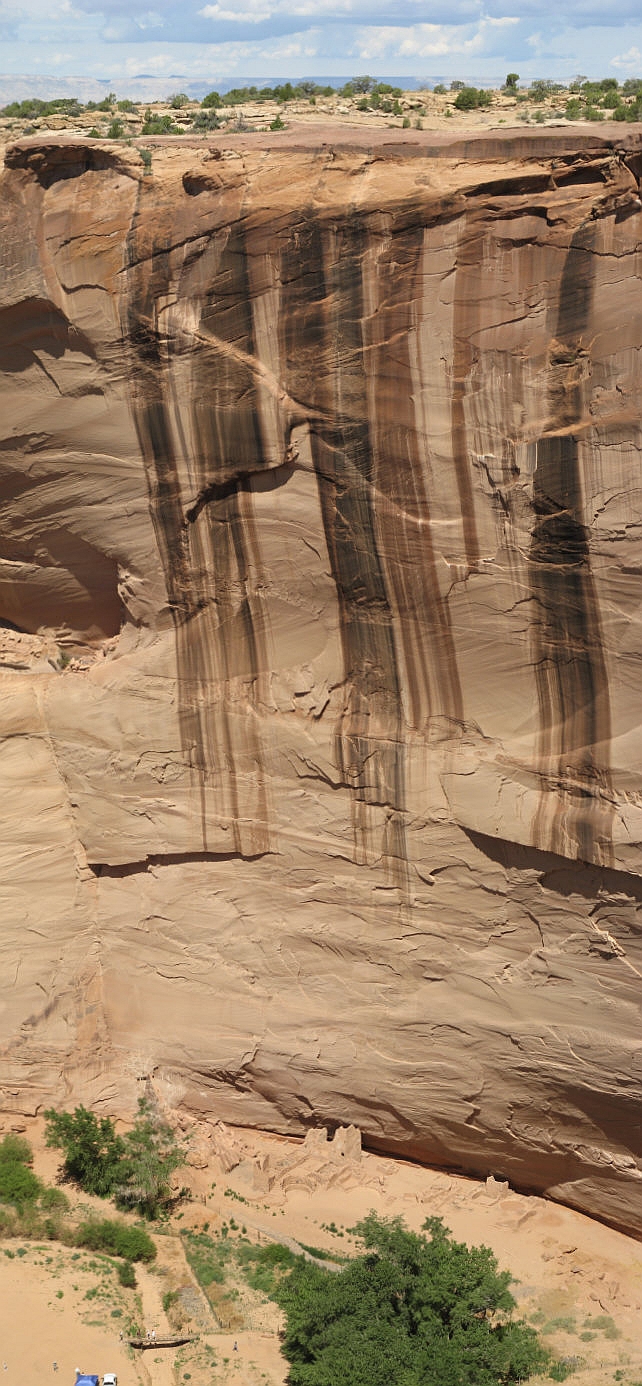 Almost everywhere we went on our vacation through Utah and Arizona, we would see this natural desert varnish that forms on the walls of canyons like this one at Canyon del Muerto, a part of the Canyon de Chelly National Park. I took a series of photos to get this vertical panoramic view of the sheer cliff from the rim of the canyon all the way down to the native Ruins at the base.
Almost everywhere we went on our vacation through Utah and Arizona, we would see this natural desert varnish that forms on the walls of canyons like this one at Canyon del Muerto, a part of the Canyon de Chelly National Park. I took a series of photos to get this vertical panoramic view of the sheer cliff from the rim of the canyon all the way down to the native Ruins at the base.
From Wikipedia:
Desert varnish forms only on physically stable rock surfaces that are no longer subject to frequent precipitation, fracturing or sandblasting. The varnish is primarily composed of particles of clay along with iron and manganese oxides. There is also a host of trace elements and almost always some organic matter. The color of the varnish varies from shades of brown to black.
Originally scientists thought that the varnish was made from substances drawn out of the rocks it coats. Microscopic and microchemical observations, however, show that a major part of varnish is clay (which could only arrive by wind). Clay, then, acts as a substrate to catch additional substances that chemically react together when the rock reaches high temperatures in the desert sun. Wetting by dew is also important in the process.
Another important characteristic of desert varnish is that it has an unusually high concentration of manganese. Manganese is relatively rare in the earth’s crust, making up only 0.12% of its weight. In desert varnish, however, manganese is 50 to 60 times more abundant. This significant enrichment is thought to be caused by biochemical processes (many species of bacteria use manganese).
Even though it contains high concentrations of iron and manganese, there are no significant modern uses of desert varnish. However, some Native American tribes created petroglyphs by scraping or chipping away the dark varnish to expose the lighter rock beneath.
Desert varnish often obscures the identity of the underlying rock, and different rocks have varying abilities to accept and retain varnish. Limestones, for example, typically do not have varnish because they are too water soluble and therefore do not provide a stable surface for varnish to form. Shiny, dense and black varnishes form on basalt, fine quartzites and metamorphosed shales due to these rocks’ relatively high resistance to weathering.
Click on the image for the really big view.
